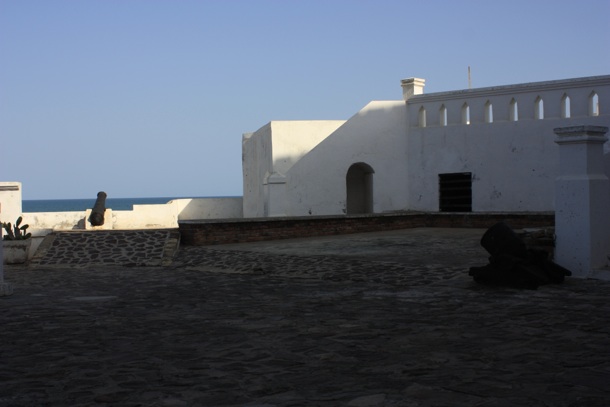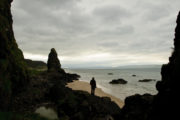What is slavery? Unforgetable lessons at Ghana’s Cape Coast Castle

Cape Coast Castle – Cape Coast, Ghana
One of the most beautiful sights are the shores that Cape Coast Castle sits upon. Looking out over the turquoise water that laps upon the coastline outside the white walls it’s easy to forget. The fishing boats lining the shoreline are so colourful as they sit waiting for their crew, the grassy knolls and earthy cliff sides looking over them in the distance are a photographers dream.
Yet, there’s a reason why I only have one picture. In retrospect, I shouldn’t have any, and feel guilty that I even took one. This is because Cape Coast Castle, with all its surrounding beauty, is a graveyard. It’s a place where thousands of Africans lost their lives to unimaginable atrocities.
Taken away from their families and subjected to a torturous conditions chained in the hundreds as they filled cells with human waste, vomit, blood, rotting bodies. Not only where they trapped in the most unsanitary conditions, but if they survived the intense heat and malnourishment their lives would forever change. Once they left through “the door of no return” for a life of slavery in new lands, they were never to set foot in their homelands again.
60 million slaves experienced these conditions during the Trans-Atlantic slave trade, and Cape Coast Castle is only one of the hundreds of slave trading compounds that fuelled this viciously inhumane industry. And of those 60 million, only 2 million people survived to find themselves slaves in a foreign place.
For those visiting Ghana there is nothing more powerful than visiting Cape Coast Castle and embarking on a tour that brings to light the historical atrocities of the slave trade. As you tour the grounds and see the beauty that surrounds it, understanding the human atrocities that went on in the dungeons below, the castle is emotionally difficult to understand.
Visiting this place is important. It’s an important reminder that living in a world where humans are treated as slaves is unacceptable, and yet there are more slaves in the world now than at any point in human history.
Experiences like this one beg the question, what can I do? We are quick to turn a blind eye to the realities that face our fellow brothers and sisters because it’s easier to forget than to do something about it. But that’s a misconception, and it doesn’t have to be that way. It is up to you and me to share experiences and stories like that of Cape Coast Castle, as well as the modern realities that plague our world.
Visiting a place like Cape Coast Castle is only the first step to realizing that slavery is something from our past that needs to be remembered. It’s a reminder of what existed in the world and still does, it challenges all of us to think about what people will consider human atrocities 300 years from now.
So rather than taking a picture then forgetting about our human history, visitors to Cape Coast Castle should remember what existed in the past, realize that it still exists in the present, and make conscious efforts in their daily lives to make changes for the future.











